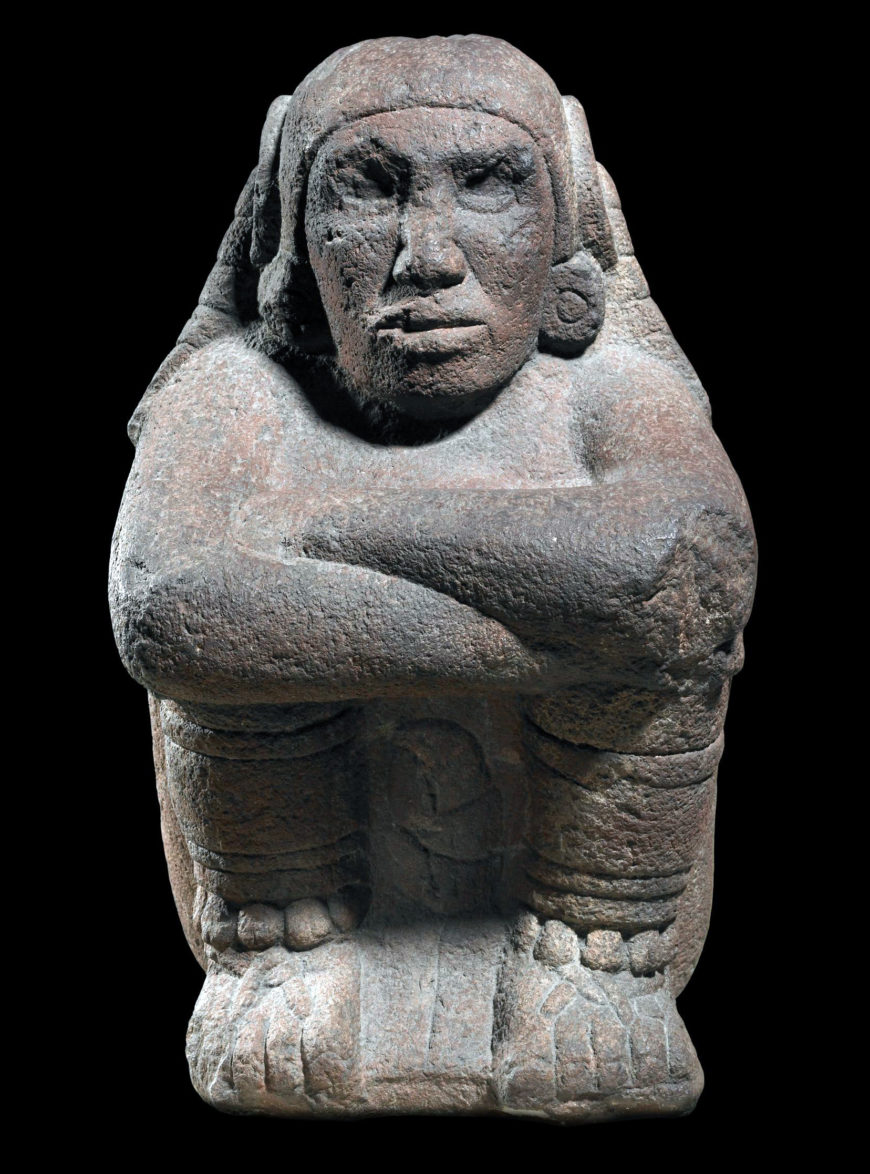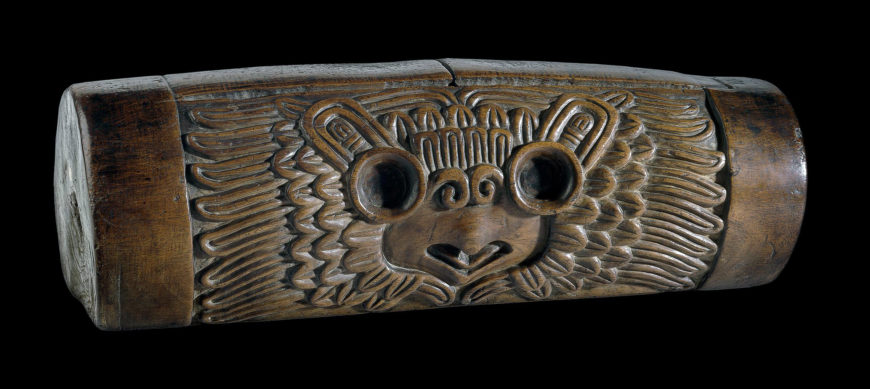
Stone seated figure of Xochipilli, Mexica, 1325–1521, from Mexico, 55 x 32 cm (© The Trustees of the British Museum)
Flower Prince
Xochipilli was the Mexica god of music and dance. His name in Nahuatl, the language spoken by the Mexica*, means ‘Flower Prince’. He was also called Macuilxochitl. Music and dance played an important role in Mexica religious and public ceremonies.

Wooden slit-drum (teponaztli), Mexica, 1325–1521, from Mexico (© The Trustees of the British Museum)
Some of the dances described by the Spanish chroniclers have survived to the present. Images of musical instruments, musicians, and dancers are represented in ceramic, stone, murals, and especially in codices (screenfold books). A variety of instruments, such as flutes, drums, the teponaztli, and conch shells, were used to accompany dances or poetry performances.
Xochipilli, like all Mexica gods, had another aspect. Bernardino de Sahagún, a sixteenth-century Spanish friar, recounts that Xochipilli could strike down with terrible diseases those who did not observe the sacred fast days.
© The Trustees of the British Museum
*The people and culture we know as ‘Aztec’ referred to themselves as the Mexica (pronounced Me-shee-ka).
Additional resources:
M. E. Miller and K. Taube, An illustrated dictionary of t (London, Thames and Hudson, 1997)
R.F. Townsend, The Aztecs (London, Thames and Hudson, 2000)
B. de Sahagun (trans. A.J.O. Anderson and C.E. Dibble), The Florentine Codex: general, 4 vols. (Santa Fe, N.M; The School of American Research, Salt Lake City, University of Utah, 1950-68)
C. McEwan, Ancient Mexico in the British (London, The British Museum Press, 1994)

